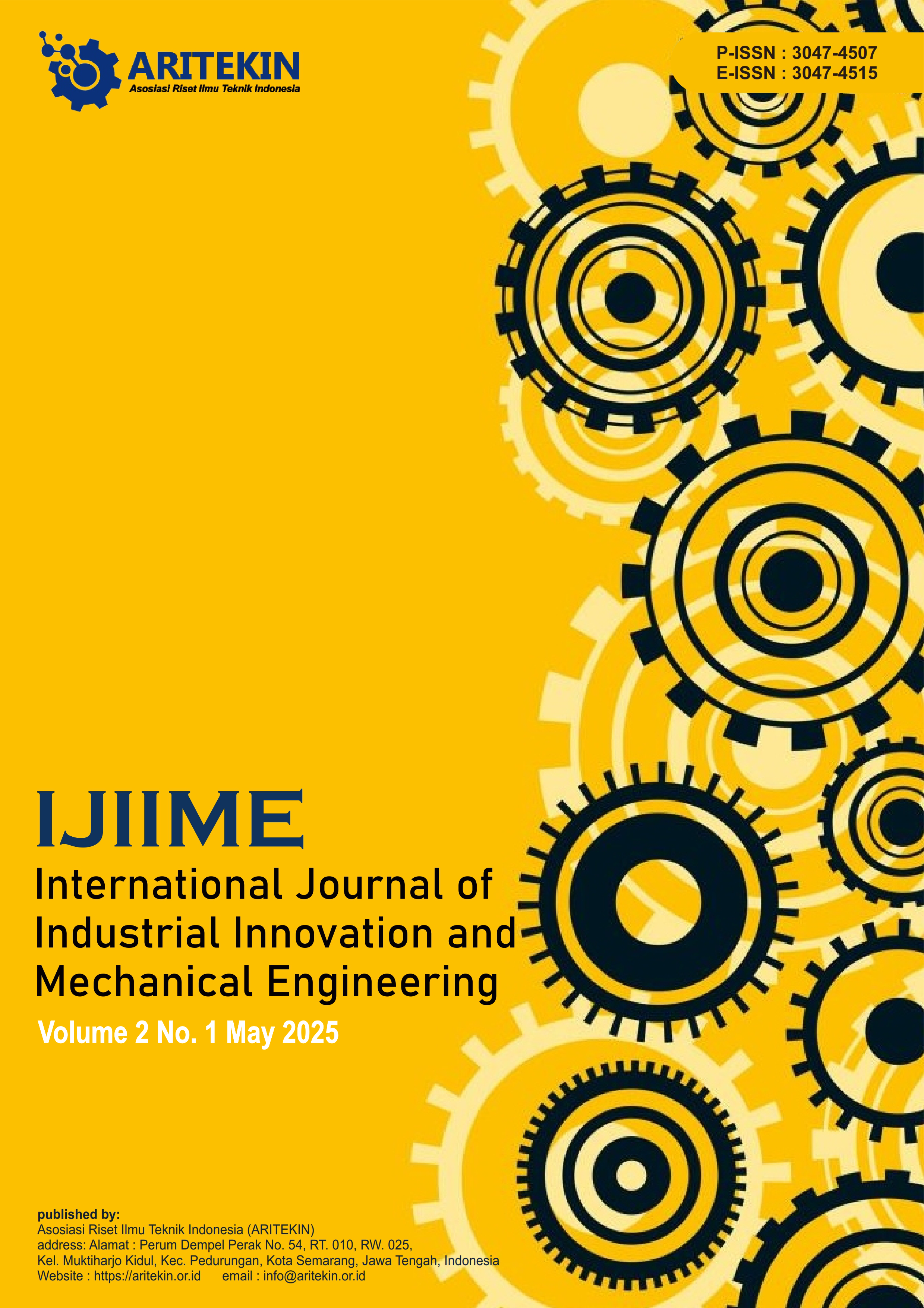Effect the Viscosity of Used Oil by Adding Chitosan Based on Shellfish and Cellulose
DOI:
https://doi.org/10.61132/ijiime.v2i1.121Keywords:
chitosan, shellfish, cellulose, viscosity, FTIRAbstract
This study explores the innovative use of chitosan from shellfish and natural cellulose as an additive to decrease the viscosity of used lubricating oils. We synthesized and applied chitosan and cellulose as adsorbents to filter impurities and enhance the rheological properties of the oil. During the experiment, different amounts of chitosan and cellulose were used, and the Ostwald method was used to measure the viscosity. As expected, adding more chitosan (20 grams) made the viscosity much better compared to mixes with cellulose. This led to a viscosity of 658.20 cP, while a 15:5 chitosan-to-cellulose ratio made the viscosity the lowest, at 513.06 cP. FTIR analyses confirmed the structural integrity of chitosan post-synthesis. Challenges in optimizing chitosan production, particularly in achieving standard deacetylation levels, were noted as potential limitations. The results suggest that using biopolymers like chitosan and cellulose together is a long-term way to improve oil recovery and reuse, lower waste, and make industrial uses better. In the future, researchers should concentrate on enhancing the manufacturing process of chitosan to enhance its adsorption capabilities, and explore alternative functional modifications that could enhance its utility in a wider range of scenarios
References
Ahmed, M. J., Hameed, B. H., & Hummadi, E. H. (2020). Review on recent progress in chitosan/chitin-carbonaceous material composites for the adsorption of water pollutants. Carbohydrate Polymers, 247, 116690.
Bakshi, P. S., Selvakumar, D., Kadirvelu, K., & Kumar, N. S. (2020). Chitosan as an environment-friendly biomaterial–a review on recent modifications and applications. International Journal of Biological Macromolecules, 150, 1072–1083.
Elsayed, N. H., Alamrani, N. A., Alatawi, R. A., Al-Anazi, M., Alenazi, D. A., Alhawiti, A. S., ... & Monier, M. (2024). Ion-imprinted aminoguanidine-chitosan for selective recognition of lanthanum (III) from wastewater. International Journal of Biological Macromolecules, 270, 132193.
Fincham, J. (2008). Response rates and responsiveness for surveys, standards, and the journal.
American Journal of Pharmaceutical Education, 72(2), 1–3.
Francis, A. O., Zaini, M. A. A., Muhammad, I. M., Abdulsalam, S., & El-Nafaty, U. A. (2023). Physicochemical modification of chitosan adsorbent: A perspective. Biomass Conversion and Biorefinery, 13(7), 5557–5575.
Kumar, K., Chand, A., Singh, R. K., Kumar, A., Chandra, H., Kumar, P., ... & Srivastava, M. (2024). Use of modified chitosan as bitumen modifier and its impact on rheological properties in bitumen modification. Environmental Science and Pollution Research, 1–15.
Kuperkar, K., Atanase, L. I., Bahadur, A., Crivei, I. C., & Bahadur, P. (2024). Degradable polymeric bio (nano) materials and their biomedical applications: A comprehensive overview and recent updates. Polymers, 16(2), 206.
Laroche, C., Delattre, C., Mati-Baouche, N., Salah, R., Ursu, A. V., Moulti-Mati, F., ... & Pierre, G. (2018). Bioactivity of chitosan and its derivatives. Current Organic Chemistry, 22(7), 641–667.
Mardiana, U. (2021). Isolasi dan karakterisasi kitosan pada kerang darah (Anadara granosa).
Journal of BTH Medical Laboratory Technology, 1(1).
Shariatinia, Z., & Jalali, A. M. (2018). Chitosan-based hydrogels: Preparation, properties and applications. International Journal of Biological Macromolecules, 115, 194–220.
Singh, S. V., Kumar, S., Sharma, A., & Singh, J. (2021). Bionanocomposites and their multifunctional applications. In Bionanomaterials: Fundamentals and biomedical applications (pp. 4-1). Bristol, UK: IOP Publishing.
Sutirman, Z. A., Sanagi, M. M., Abd Karim, K. J., Naim, A. A., & Wan Ibrahim, W. A. (2018). Chitosan-based adsorbents for the removal of metal ions from aqueous solutions. Malaysian Journal of Analytical Sciences, 22, 839–850.
Upadhyay, U., Sreedhar, I., Singh, S. A., Patel, C. M., & Anitha, K. L. (2021). Recent advances in heavy metal removal by chitosan-based adsorbents. Carbohydrate Polymers, 251, 117000.
Wen, C. K. (2017). Preparation and characterization of polyvinyl alcohol/chitosan composite films reinforced with cellulose nanofiber (Master's thesis, University of Malaya, Malaysia).
Zhang, L., Zeng, Y., & Cheng, Z. (2016). Removal of heavy metal ions using chitosan and modified chitosan: A review. Journal of Molecular Liquids, 214, 175–191.
Downloads
Published
How to Cite
Issue
Section
License
Copyright (c) 2024 International Journal of Industrial Innovation and Mechanical Engineering

This work is licensed under a Creative Commons Attribution-ShareAlike 4.0 International License.





